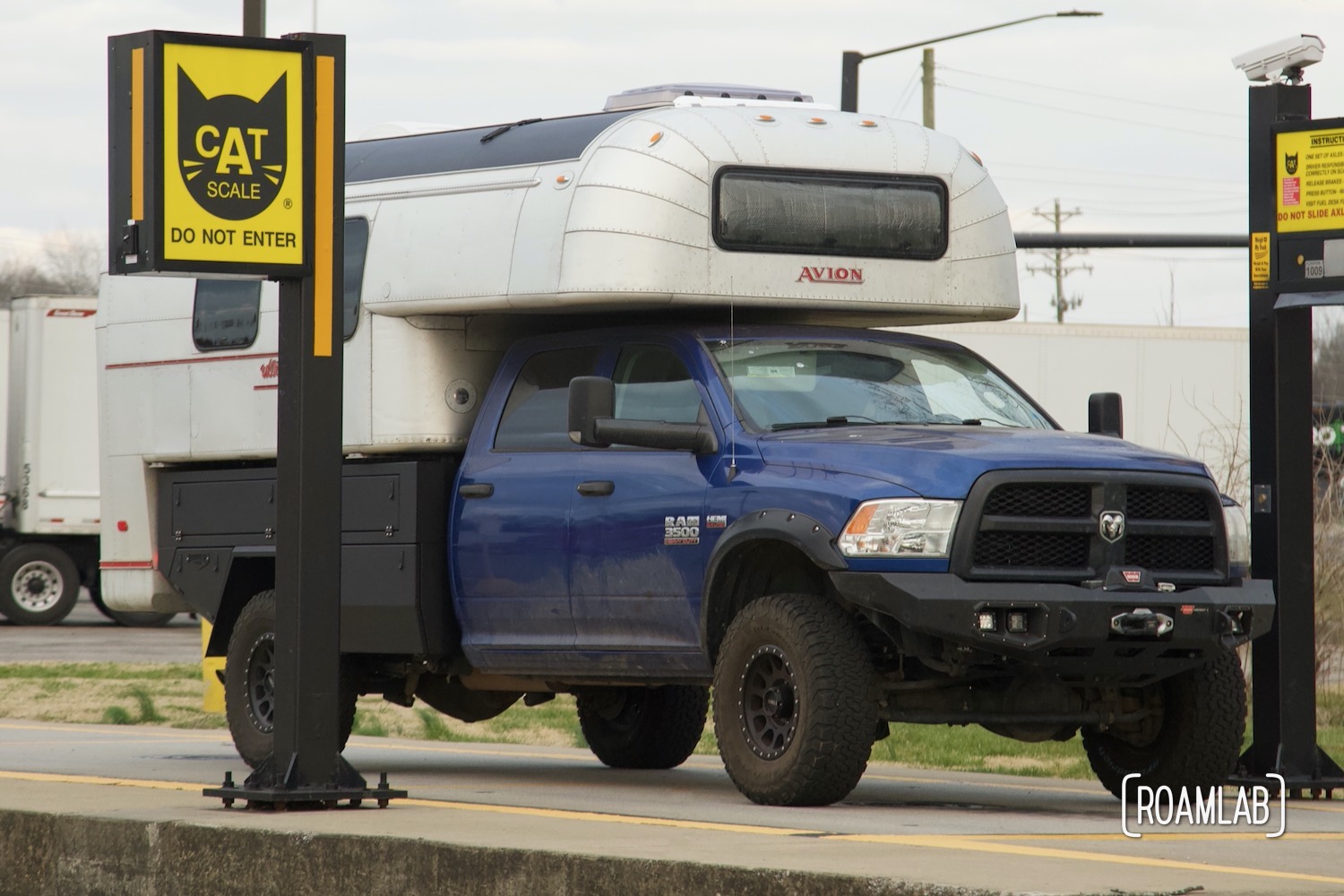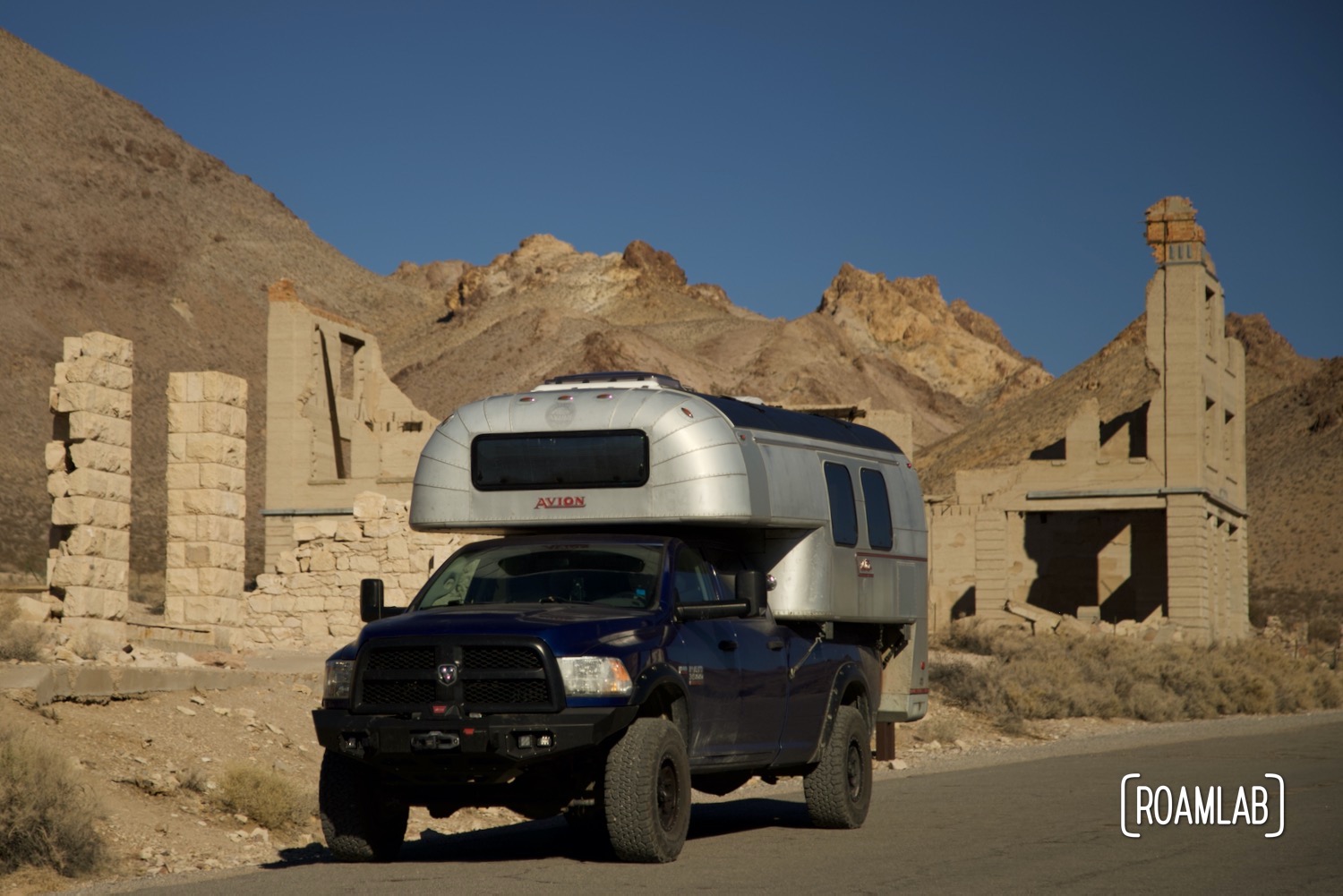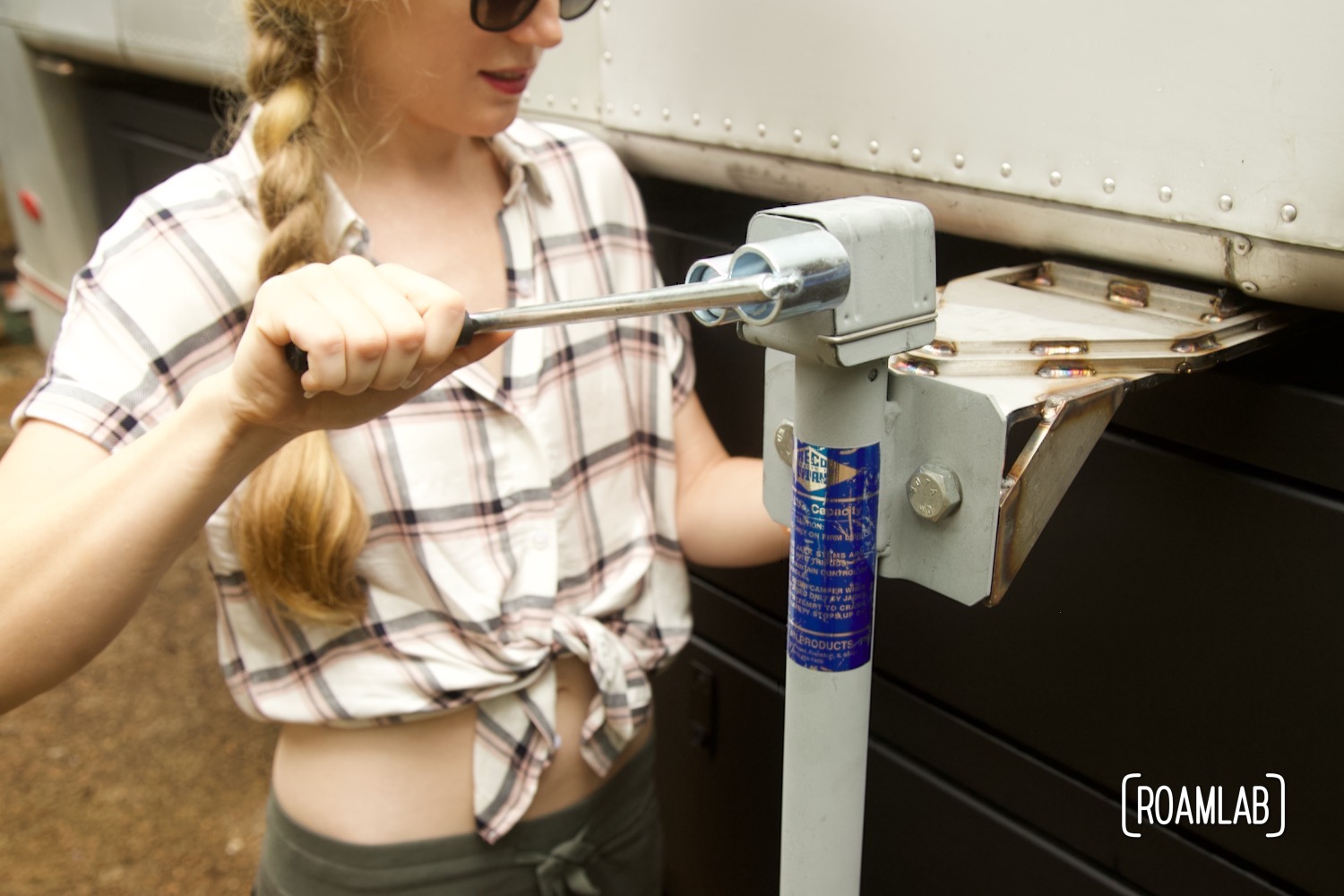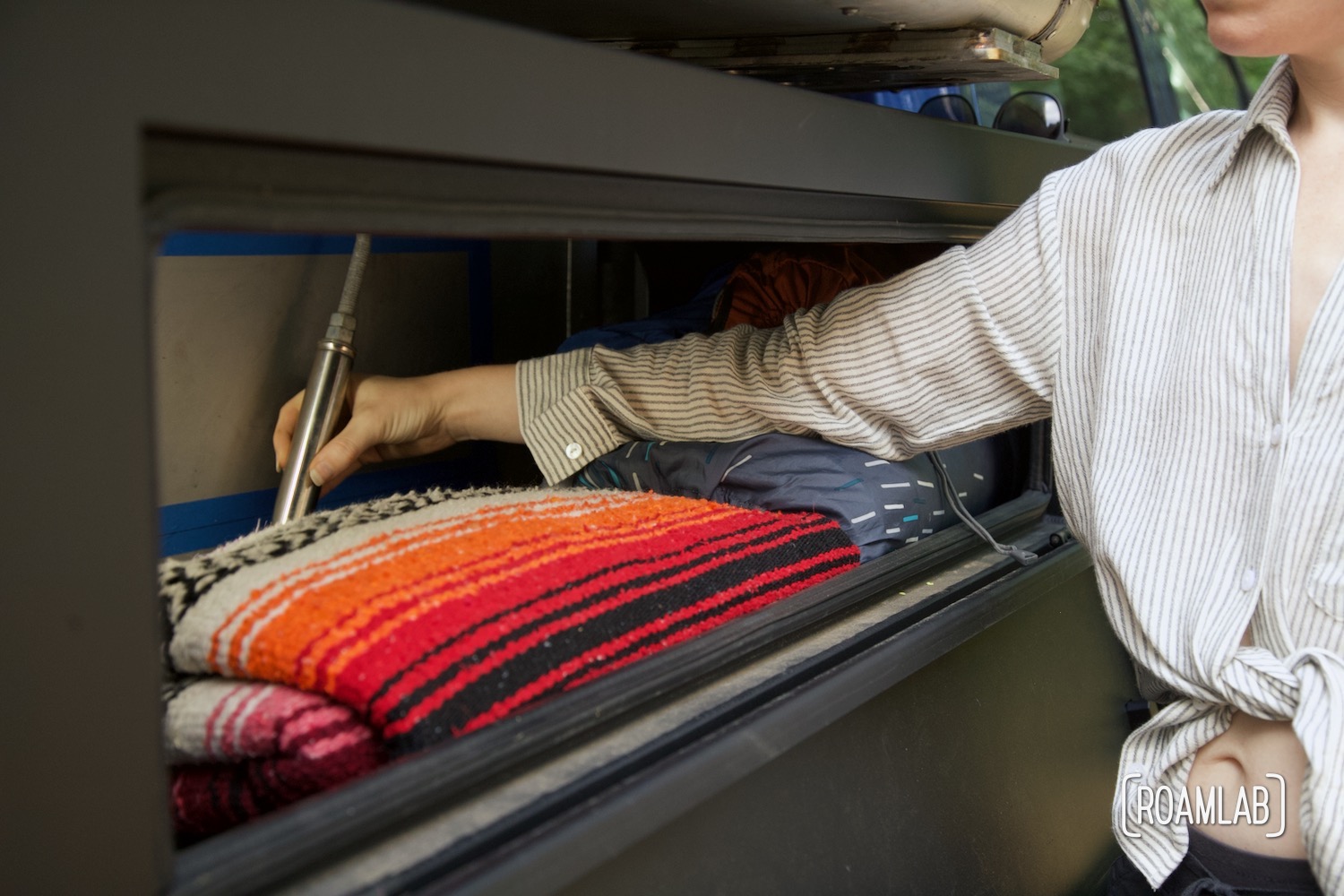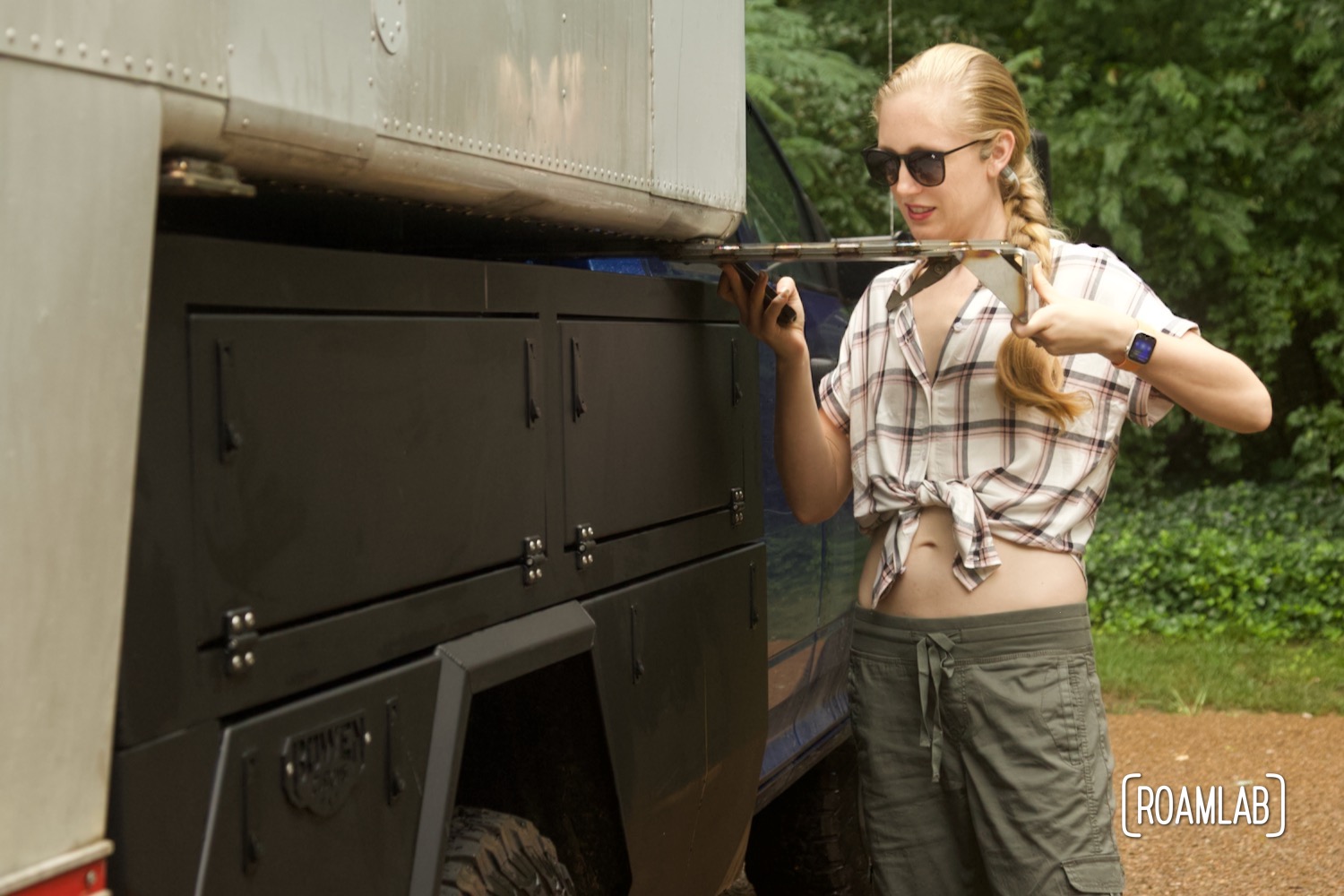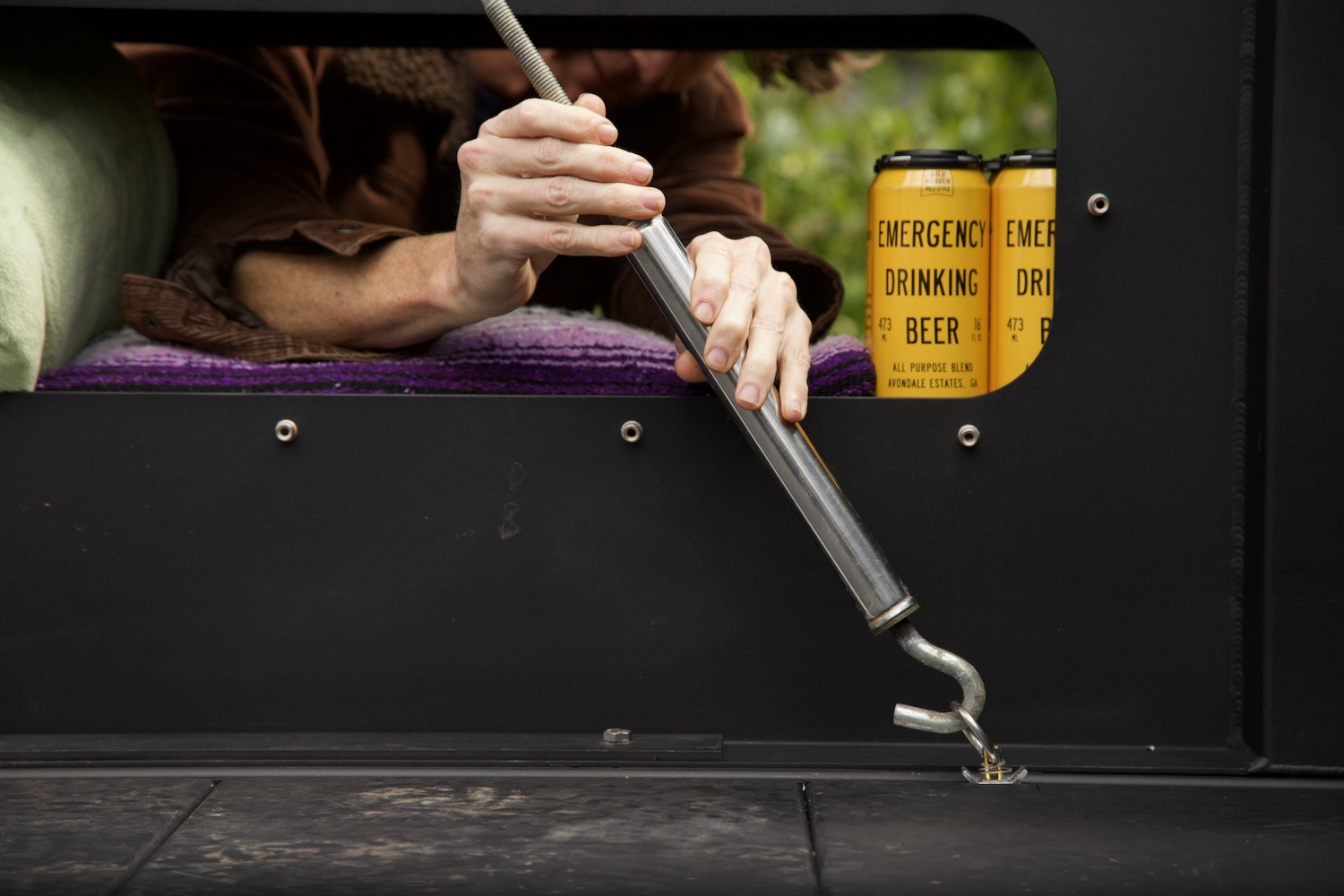
Custom Truck Camper Tie-Down System Tie-Downs, Mount Points, Turnbuckles, & More
You may have heard that we just installed a custom truck bed on our 2015 Ram 3500. It’s a beaut! With it, we increase our storage potential while traveling with our 1970 Avion C11 truck camper. But it has also dramatically changes how we travel with our truck camper. You see, we have a completely new tie-down system for our camper.
What are Tie Downs?
For people without truck campers, tie-downs may be a bit confusing. Motorhomes, busses, and vans share their living area and means of propulsion in one bolted or welded together frame. Most other RVs are mounted to the trailer hitch. Truck campers, however, sit in the truck bed, and keeping them in place requires tie-downs. The campers come with a mount point on the camper—such as a u-bolt where the camper flares over the truck bed wall. We can connect a turnbuckle or chains to the camper mount point, but the truck also needs some point to receive the other end of the turnbuckle. So, we install a tiedown point to secure the camper to the truck.

The Old Tie-Down System(s)
When we first acquire our Avion truck camper, we are ill-prepared to transport it. It is a rushed transaction. We have no proper tie-downs. Though, to be fair, the truck camper’s mount points are rotted out. So the tie-downs are only one weak link in a corroded chain of weak links.
But we have to get the camper to our workshop before we can make it road-worthy. So we “secure” the mount points to the truck bed’s built in- tiedown points and slowly drive the truck camper on long backroads. The trip to the camper takes 1 day. The trip back to our workshop takes three. Once we get back to our workshop and start researching, we discover that those factory tie-downs are rated for only a fraction of our truck weight and we need a specialized system.

Brophy Tie-Down System
Initially, we pick up some Brophy Tie downs. These are very simple, entry-level models that bolt onto the truck bed walls and provide leverage to secure the camper to the truck. We go into detail about the Brophys in our write-up: Brophy Camper Tie Downs.
These serve us well for a couple of years. But the tie-downs gradually bend the truck bed walls with the force of the camper bobbing on the road. So we start looking for an alternative.

Happijac Tiedown System
Next up, we upgrade to the HappiJac Frame Mount Camper Tiedown System. Full disclosure: they don’t fully mount to the truck frame. But frankly, these are more than sufficient. They are a far more reliable tiedown point. And I remain a huge fan. But while they don’t really mount to the truck frame, they do mount to the truck bed. And with the new truck bed, we need a new tie-down point.

The New Tie-Down System
Designing our new truck bed is no simple task. I’ve written a lot about the extended process of designing a truck bed that is roadworthy, lightweight, and includes as much storage as possible. It’s challenging on many levels but a custom truck bed also gives us an opportunity to also create a custom tie-down system.
Both the Brophy and HappiJac tie-downs bind the camper to the truck on the outer edge of the truck bed walls. This system catches on shrubs and trees when traveling narrow trails. Now, with our new truck bed, we’ll be binding the truck and camper using concealed tie-downs behind the truck bed boxes.
This approach would not have worked with our past truck bed. How would we reach the tie-downs behind the truck bed wall? But with our new truck bed. the boxes not only have doors from the outside to store items in them, but they also have removable rear walls to access the camper tie downs.

New Truck Bed Tie-Down Points
Now that we can access the truck bed interior, we need a tie-down point in the truck bed to mount the camper. In fact, we have many tiedown points because we install two rows of airline-style L-track bolted to the truck frame and concealed behind the bed’s storage boxes.
This modular design means that we can use the track for many applications depending on the fittings used. To secure the camper, we use wing studs with a metal ring as our tiedown points. The studs have a break strength between 2,000 to 4,000 lbs, depending on the angle. Even in the worst case, that is more than enough for our camper which is currently 1,300 lbs.*

New Camper Brackets
Granted, this is only half of the solution. With the truck bed tie downs behind the storage boxes, the camper mount points also have to move. Fortunately, we have an elegant solution. We already have to replace the jack points for lifting the camper out of the truck to make room for the new truck bed storage boxes. So, the hardware for the new jack points also extends over the storage boxes to create an interior mount point.



Connecting the Truck And Camper
With all this, one might think we would finally be done. But there’s one last challenge to overcome. How do we connect the camper mount point to the truck tie-down? We have the interior hatch in the storage boxes to let us reach the space, but there is only a few inches allowance between the box and camper walls. The turnbuckle system that we had been using to connect the two points requires a little too much dexterity for that small space. Instead, we are using a ratchet strap to synch the truck and camper together.

Final Thoughts on the Tie-Down System
I’m still in awe of the final result. From the road, there isn’t any visible evidence of how the camper is secured. Yet this design is sturdy and allows us some flexibility to experiment with the angle of our tie-downs by shifting the position of the wing stud fittings on our L-track. We’ll be keeping a close eye on how it holds up and reporting back.
Do you have any questions about any detail that we missed? Let us know in the comments!
* That is a current weight. We have a lot more work to do on the camper which will add weight but we do not anticipate it ever exceeding 2,000 lbs.


